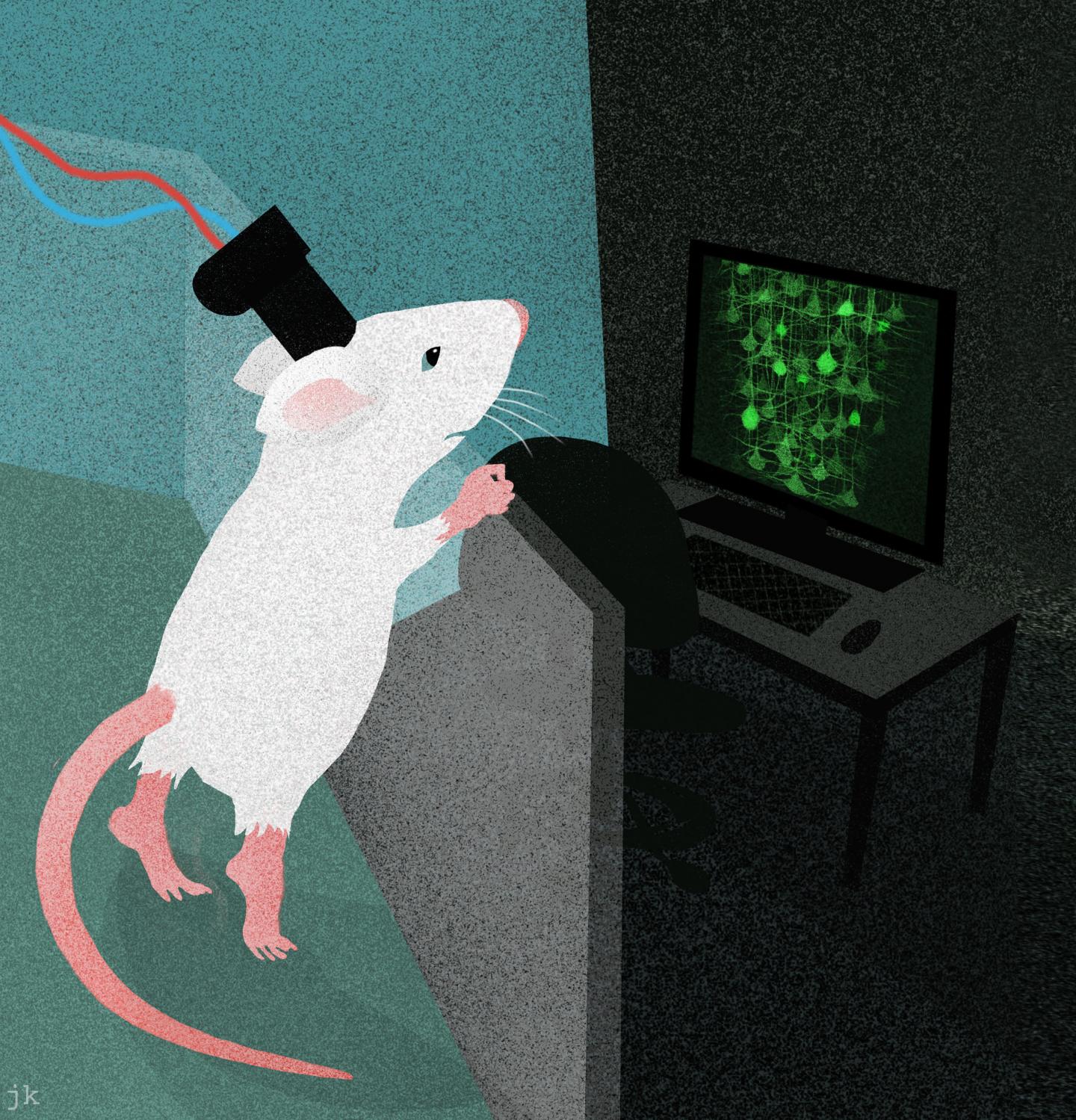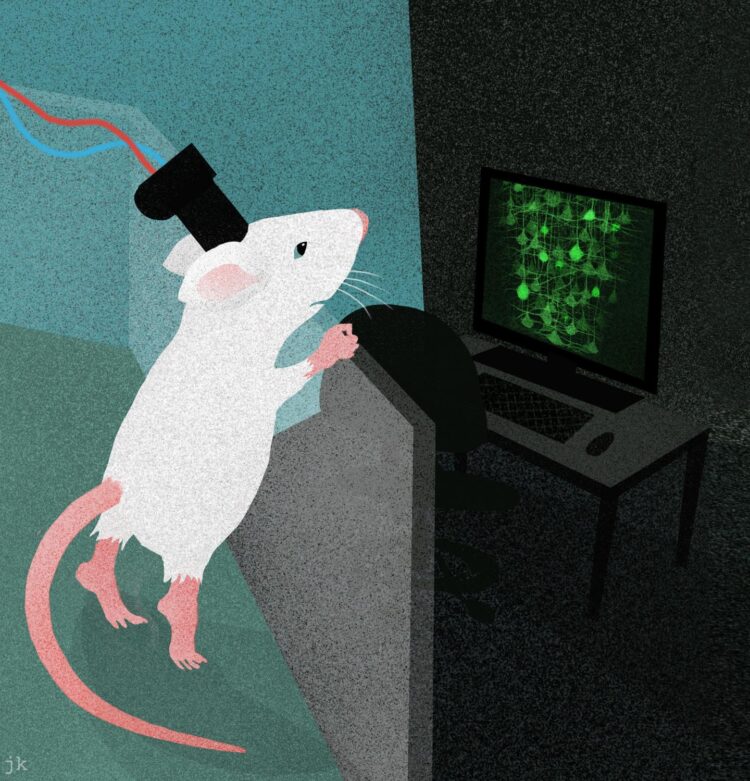Scientists have developed a head-mounted miniature microscope, the so-called fiberscope, that is capable of imaging all cortical layers of a freely moving rat

Credit: Artwork: Julia Kuhl
Scientists working at caesar have developed a small head-mounted microscope that allows access to the inner workings of the brain. The new system enables measurement of activity from neuronal populations located in the deep cortical layer with single-cell resolution, in an animal that is freely behaving.
Understanding how animals use their brain circuitry to generate behavior in response to their environment is one of the central goals of neuroscience. While it is possible to study animal behavior by observing how an animal solves problems, to gain an understanding of the brain’s role in generating the behavior the brain circuit activity must be measured at the same time.
In vivo imaging is, of course, nothing new in biology: it dates back to the very beginnings of microscopy. To look inside the brain, special microscopes can be used that can see through the tissue enabling the observation of neuronal circuits at work. Using a microscope to image neural activity has the advantage of being relatively non-invasive. Mounted outside the brain, the microscope simply sends light into the brain, in turn receiving the light emitted out of the brain. While conventional microscopes are too heavy to enable functional imaging from freely behaving animals, over the last years significant effort has gone into developing head-mounted miniaturized microscopes.
In 2009, Jason Kerr’s group, in collaboration with the group of Winfried Denk at the Max Planck Institute of Neurobiology (Martinsried), established a miniaturized head-mounted multiphoton microscope. It enabled recording of activity from neuronal populations located in the upper few layers in visual cortex of awake, freely moving rats. While this ‘two-photon fiberscope’ was a breakthrough in measuring brain activity from freely behaving animals, most of the cortical layers remained out of reach. To image the deeper layers of the cortex on a cellular level, a new approach was needed.
In collaboration with Philip Russell’s group at the Max Planck Institute for the Science of Light, Kerr’s group has now developed a small head-mounted multiphoton microscope, capable of imaging all cortical layers in a freely moving rat. Light is delivered through a custom designed and manufactured glass fiber, utilizing the ‘three-photon effect’ to image neuronal activity located in deep cortical layers. Compared to two-photon or one-photon fluorescence microscopy, three-photon is ideal for imaging deeper in scattering tissue, and enables clearer images of single cells deep in the tissue. The new microscope allows for continuous imaging of neuron populations, even when the animal runs or performs complex behavioral tasks, over extended periods of time.
The researchers expect the fiberscope to be widely applicable to behavioral research, as previous microscopes were limited in their imaging depth and unsuitable for use over extended periods of time, restricting the types of behaviors that could be observed. With this new approach, researchers are now able to understand the complex network dynamics that underlie neural computation which, in turn, forms the basis of perception and behavior.
###
Original publication:
Klioutchnikov, A., Wallace, D.J., Frosz, M.H., Zeltner, R., Sawinski, J., Pawlak, V., Voit, K.M., Russel, P.St.J. and Kerr, J.N.D. (2020). Three-photon head-mounted microscope for imaging deep cortical layers in freely moving rats. Nat. Methods 17, 509-513.
https:/
Media Contact
Sebastian Scherrer
[email protected]
Original Source
https:/
Related Journal Article
http://dx.





